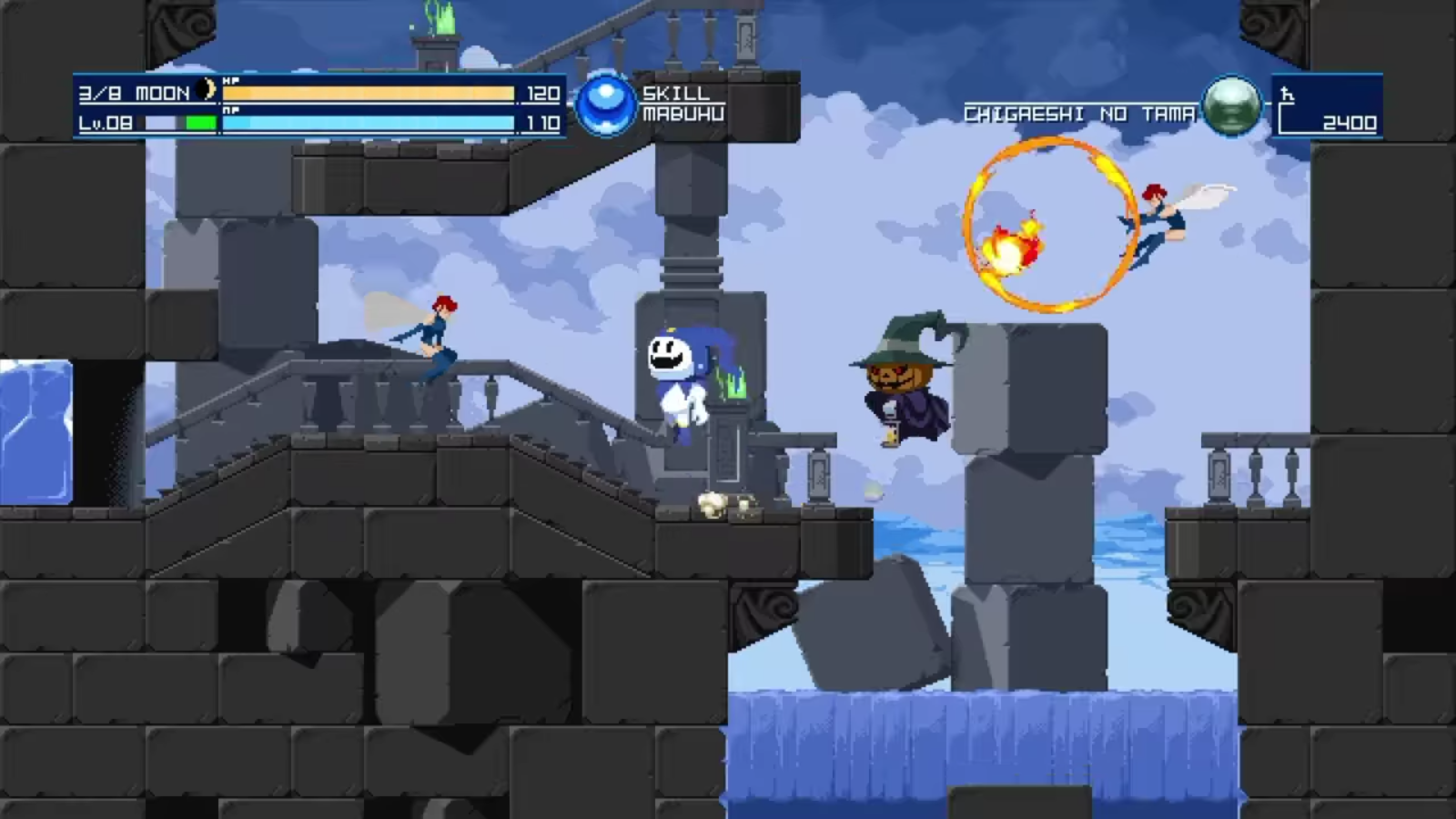

- #SHIN MEGAMI TENSEI SYNCHRONICITY PROLOGUE ENGLISH DOWNLOAD FULL#
- #SHIN MEGAMI TENSEI SYNCHRONICITY PROLOGUE ENGLISH DOWNLOAD SERIES#
Many characters (especially mascots like Jack Frost and sexy female demons like Angel or Nekomata) still use designs that illustrator Kazuma Kaneko drafted decades ago. The series’ demonic bestiary has accumulated over the years, with new demons joining old. Really, the term “demon” is somewhat misleading: The allies and enemies you face cover the gamut of historic pantheons, from figures of Celtic or Japanese folklore to Hindu deities to famous Christian entities like Yahweh and Lucifer.

The mechanisms for gathering demonic allies vary from game to game, but they usually involve technology, be it a computer, a cellphone or a television. Having originated with a novel about summoning demons with a computer program, MegaTen has always and invariably dealt with the occult. If you just choose “attack” over and over, you’ll never get any further.
#SHIN MEGAMI TENSEI SYNCHRONICITY PROLOGUE ENGLISH DOWNLOAD SERIES#
Shin Megami Tensei is never afraid to challenge players, and nearly every entry in the series has its own infamous “brick wall” boss designed to test players’ understanding of the underlying systems and mechanics.
#SHIN MEGAMI TENSEI SYNCHRONICITY PROLOGUE ENGLISH DOWNLOAD FULL#
MegaTen RPGs take a serious approach to the format, making use of the full suite of RPG mechanics, especially elemental affinities, status effects, buffs and debuffs. Atlus has explored nearly every possible facet of the genre with these games: dungeon crawlers, dual-version Pokémon clones, classic console RPGs and more. Not every MegaTen game falls under the role-playing banner, but for the most part, this is where you’ll want to file the series. Even their titles aren’t always consistent - in Japan, Persona and Devil Survivor appeared under the name “Megami Ibunroku” rather than “Shin Megami Tensei.” What unites these dozens of disparate works? You can always count on finding some or all of these four fundamental pillars in each of these games. What defines MegaTen, exactly? The series has given us platformers, strategy games, action RPGs … even puzzle games. For example, a fan of Persona 5’s character-driven school simulation is likely to be disappointed by the old-school combat-focused dungeon crawling of Strange Journey Redux or the tactical combat of Devil Survivor, and vice versa.

It can be hard to know what mix of game concepts and mechanics you’ll be getting when you pick up a new MegaTen game.

MegaTen’s slow and spotty localization history (not to mention Atlus’ tendency to produce more side works than numbered, core titles) had saddled it with a very confusing English-language legacy.Īlthough all MegaTen games share certain elements, each individual release approaches those concepts from a different angle. For many years, American and European role-playing game fans knew of the series as little more than a footnote, an import obscurity. Yet only within the past decade or so has Atlus made a concerted effort to translate everything MegaTen. Shin Megami Tensei (which fans frequently call “MegaTen”) has been around for more than 30 years. That hasn’t always been the case, though. With this guide, we’ll break down the relationships between this huge and frequently confusing family of video games - so that you can start clearing out at least some of your lengthy RPG backlog already. If you don’t know how or where to dip your toe in first, they may just become eternal members of your to-play pile. But with so much history behind the games, finding a jumping-off point can be intimidating. Diverse titles in the series, like Persona 4 and Shin Megami Tensei 4 (totally different games!), have garnered so much acclaim over years that they’ve become essential for RPG fans to check out. MegaTen is now one of the most beloved Japanese role-playing franchises in both the East and West.


 0 kommentar(er)
0 kommentar(er)
